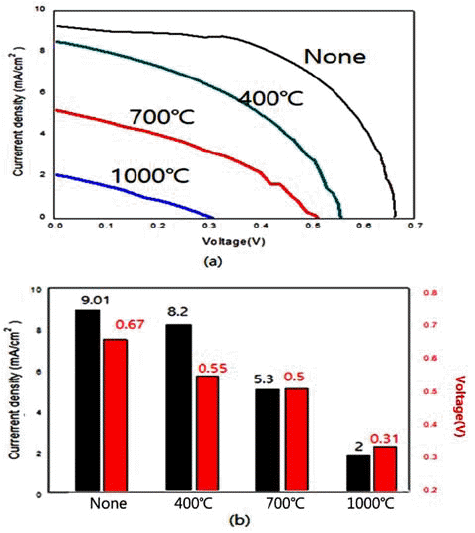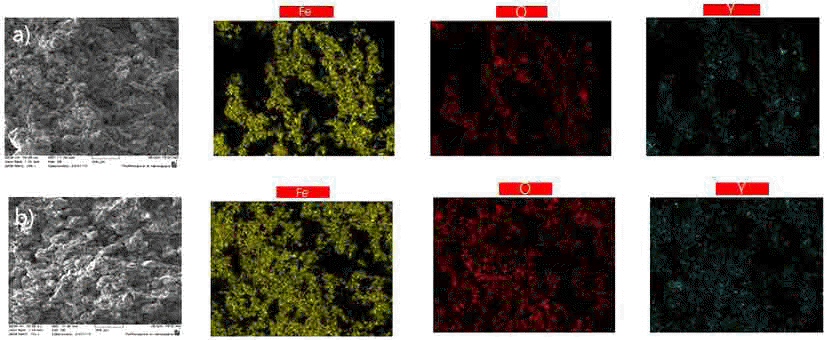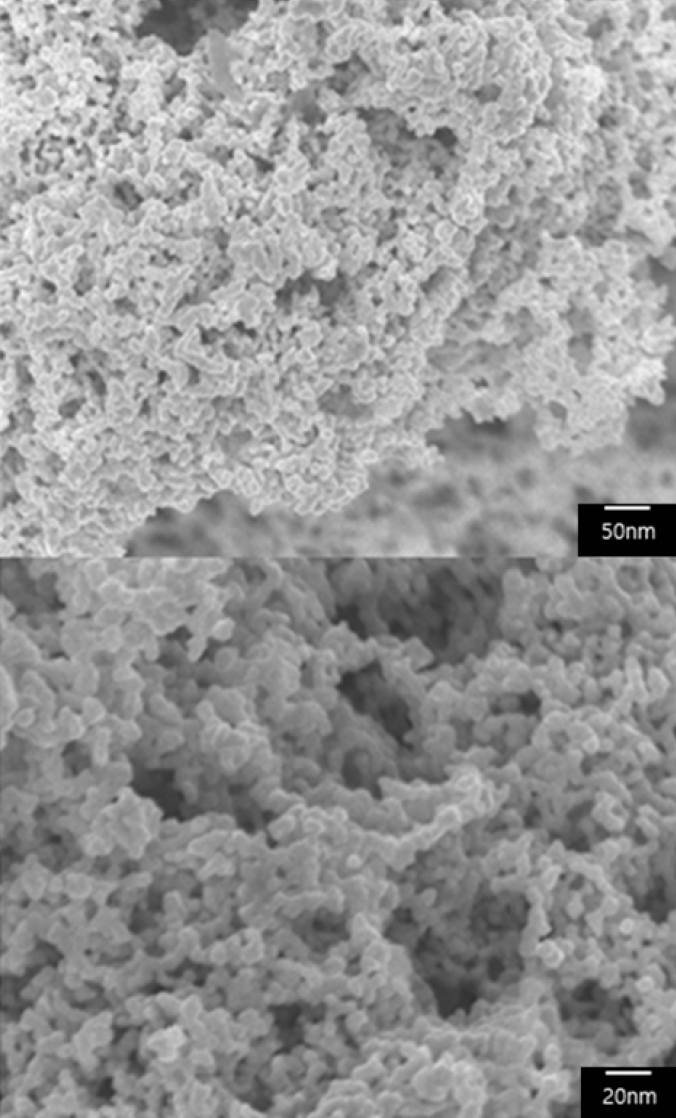Search
- Page Path
- HOME > Search
- [Korean]
- Synthesis of Nanopowders by Hydrothermal Method and their Application to Dye-sentisized Solar Cell Materials
- JinYoung Lim, Jeongseok Ahn, Jung-Ho Ahn
- J Korean Powder Metall Inst. 2018;25(4):309-315. Published online August 1, 2018
- DOI: https://doi.org/10.4150/KPMI.2018.25.4.309

- 564 View
- 2 Download
-
 Abstract
Abstract
 PDF
PDF In the present work, we synthesize nano-sized ZnO, SnO2, and TiO2 powders by hydrothermal reaction using metal chlorides. We also examine the energy-storage characteristics of the resulting materials to evaluate the potential application of these powders to dye-sensitized solar cells. The control of processing parameters such as pressure, temperature, and the concentration of aqueous solution results in the formation of a variety of powder morphologies with different sizes. Nano-rod, nano-flower, and spherical powders are easily formed with the present method. Heat treatment after the hydrothermal reaction usually increases the size of the powder. At temperatures above 1000°C, a complete collapse of the shape occurs. With regard to the capacity of DSSC materials, the hydrothermally synthesized TiO2 results in the highest current density of 9.1 mA/cm2 among the examined oxides. This is attributed to the fine particle size and morphology with large specific surface area.
- [Korean]
- The Microstructure and Mechanical Properties of Y2O3-Dispersed Fe-C and Fe-CNT Sintered Steels
- Jin Young Lim, Jung-Ho Ahn
- J Korean Powder Metall Inst. 2017;24(4):298-301. Published online August 1, 2017
- DOI: https://doi.org/10.4150/KPMI.2017.24.4.298

- 470 View
- 1 Download
-
 Abstract
Abstract
 PDF
PDF In the present work, we use multiwall carbon nanotubes (MWCNT) as the starting material for the fabrication of sintered carbon steel. A comparison is made with conventionally sintered carbon steel, where graphite is used as the starting material. Milling is performed using a horizontal mill sintered in a vacuum furnace. We analyze the grain size, number of pores, X-ray diffraction patterns, and microstructure. Changes in the physical properties are determined by using the Archimedes method and Vickers hardness measurements. The result shows that the use of MWCNTs instead of graphite significantly reduces the size and volume of the pores as well as the grain size after sintering. The addition of Y2O3.to the Fe-MWCNT samples further inhibits the growth of grains.
- [English]
- Expansion of Multi-wall Carbon Nanotubes and its Lithium Storage Property
- Jung-Ho Ahn, Jeong-Seok Ahn
- J Korean Powder Metall Inst. 2017;24(4):275-278. Published online August 1, 2017
- DOI: https://doi.org/10.4150/KPMI.2017.24.4.275

- 622 View
- 2 Download
-
 Abstract
Abstract
 PDF
PDF In the present work, we apply a technique that has been used for the expansion of graphite to multiwall carbon nanotubes (MWCNT). The nanotubes are rapidly heated for a short duration, followed by immersion in acid solution, so that they undergo expansion. The diameter of the expanded CNTs is 5-10 times larger than that of the asreceived nanotubes. This results in considerable swelling of the CNTs and opening of the tube tips, which may facilitate the accessibility of lithium ions into the inner holes and the interstices between the nanotube walls. The Li-ion storage capacity of the expanded nanotubes is measured by using the material as an anode in Li-ion cells. The result show that the discharge capacity of the expanded nanotubes in the first cycle is as high as 2,160 mAh/g, which is about 28% higher than that of the un-treated MWCNT anode. However, the charge/discharge capacity quickly drops in subsequent cycles and finally reaches equilibrium values of ~370 mAh/g. This is possibly due to the destruction of the lattice structures by repeated intercalation of Li ions.
- [Korean]
- Synthesis of Copper Nanoparticles by a Chemical Reduction Method
- Min Woo Choi, Min Hwan Bae, Jung-Ho Ahn
- J Korean Powder Metall Inst. 2016;23(3):228-234. Published online June 1, 2016
- DOI: https://doi.org/10.4150/KPMI.2016.23.3.228

- 1,720 View
- 37 Download
- 3 Citations
-
 Abstract
Abstract
 PDF
PDF Copper nanoparticles attract much attention as substitutes of noble metals such as silver and can help reduce the manufacturing cost of electronic products due to their lower cost and good conductivity. In the present work, the chemical reduction is examined to optimize the synthesis of nano-sized copper particles from copper sulfate. Sodium borohydride and ascorbic acid are used as reducing and antioxidant agents, respectively. Polyethylene glycol (PEG) is used as a size-control and capping agent. An appropriate dose of PEG inhibits the abnormal growth of copper nanoparticles, maintaining chemical stability. The addition of ascorbic acid prevents the oxidation of nanoparticles during synthesis and storage. Transmission electron microscopy (TEM) and Fourier transform infrared spectroscopy (FTIR) are used to investigate the size of the synthesized nanoparticles and the coordination between copper nanoparticles and PEG. For chemical reduction, copper nanoparticles less than 100 nm in size without oxidized layers are successfully obtained by the present method.
-
Citations
Citations to this article as recorded by- Correlation between electrical conductivity and antibacterial activity of chitosan-stabilized copper and silver nanoparticles
C.Raja Mohan, Ruckmani Kandasamy, J. Kabiriyel
Carbohydrate Polymer Technologies and Applications.2024; 7: 100503. CrossRef - Green Synthesis and Characterization of Natural Magnetic Particles/Chitosan Composite Material Impregnated with Copper Nanoparticles
Defia Indah Permatasari, Bambang Rusdiarso, Nuryono Nuryono
Solid State Phenomena.2022; 339: 19. CrossRef - Copper Nanoparticle(CuNP’s)Synthesis: A review of the various ways with Photocatalytic and Antibacterial Activity
Israfil Alam Tito, Sahab Uddin, Shafiul Islam, Snahasish Bhowmik
Oriental Journal Of Chemistry.2021; 37(5): 1030. CrossRef
- Correlation between electrical conductivity and antibacterial activity of chitosan-stabilized copper and silver nanoparticles
- [Korean]
- Mechanical Alloying of GaSe and GaTe Systems
- Jung Bo Choi, Jung-Ho Ahn
- J Korean Powder Metall Inst. 2014;21(5):338-342. Published online October 1, 2014
- DOI: https://doi.org/10.4150/KPMI.2014.21.5.338

- 560 View
- 0 Download
- 1 Citations
-
 Abstract
Abstract
 PDF
PDF In the present work, we investigated the mechanical alloying of binary Ga-Se(1:1) and Ga-Te(1;1) sysyems. The high-energy ball-milling was performed at 40°C where one of constituents (Ga) is molten state. The purpose of the work was to see whether reactions between constituent elements are accelerated by the presence of a liquid phase. During the ball-milling, the liquid Ga phase completely disappeared and the resulting powders consist of nanocrystalline grain of ~20 nm with partly amorphized phases. However, no intermetallic compounds formed in spite of the presence of the liquid phases which has much higher diffusivity than solid constituents. By subsequent heat-treatments, the inter-metallic compounds such as GaSe and GaTe formed at relatively low temperatures. The formation temperature of theses compound was much lower than those predicted by equilibrium phase diagram. The comparison of the ball-milled powders with un-milled ones indicated that the easy formation of intermetallic compound or allying occurs at low temperatures.
-
Citations
Citations to this article as recorded by- A Study on Synthesis of Ni-Ti-B Alloy by Mechanical Alloying from Elemental Component Powder
Jung Geun Kim, Yong Ho Park
Journal of Korean Powder Metallurgy Institute.2016; 23(3): 202. CrossRef
- A Study on Synthesis of Ni-Ti-B Alloy by Mechanical Alloying from Elemental Component Powder
- [Korean]
- Structural Modification of Carbon Nanotubes during Ball-milling
- Hye Rim Nam, Jung-Ho Ahn
- J Korean Powder Metall Inst. 2013;20(4):258-263.
- DOI: https://doi.org/10.4150/KPMI.2013.20.4.258

- 667 View
- 3 Download
- 2 Citations
-
 Abstract
Abstract
 PDF
PDF - We examined various ball-milling parameters which affect the structural and morphological modification of multi-wall carbon nanotubes. In particular, the effect of milling mode and the use of different milling agents were examined. Friction milling mode induced more structural changes than impact milling mode except the use of dry ice as a milling agent. Wet milling was helpful for reducing more effectively the agglomeration of nanotubes than dry milling. The use of hard solid particles such as silica and alumina as milling agents resulted in an effective shortening of nanotubes, but often susceptible to the amorphization and the destruction of crystallinity.
-
Citations
Citations to this article as recorded by- Development of a Hydrogen Uptake-Release Mg-Based Alloy by Adding a Polymer CMC (Carboxymethylcellulose, Sodium Salt) via Reaction-Accompanying Milling
Young Jun Kwak, Eunho Choi, Myoung Youp Song
Metals and Materials International.2018; 24(5): 1181. CrossRef - Expansion of Multi-wall Carbon Nanotubes and its Lithium Storage Property
Jung-Ho Ahn, Jeong-Seok Ahn
Journal of Korean Powder Metallurgy Institute.2017; 24(4): 275. CrossRef
- Development of a Hydrogen Uptake-Release Mg-Based Alloy by Adding a Polymer CMC (Carboxymethylcellulose, Sodium Salt) via Reaction-Accompanying Milling
- [Korean]
- Synthesis of Al/AlN Composites by Mechanical Alloying and the Effect of PCA on Their Properties
- Seok-Hyeoun Kim, Yong-Jin Kim, Jung-Ho Ahn
- J Korean Powder Metall Inst. 2011;18(3):238-243.
- DOI: https://doi.org/10.4150/KPMI.2011.18.3.238

- 377 View
- 0 Download
-
 Abstract
Abstract
 PDF
PDF - Al/AlN composites were synthesized by mechanical alloying using process control agents(PCAs). Three different PCAs which contain N element, were examined to see the effectiveness of ball-milling and the nitridation during sintering. Among examined PCAs, C_8H_6N_4O_5 was the most effective to facilitate ball-milling and to form nitrides during a subsequent sintering. By a proper control of ball-milling and sintering, we could obtained surface-hardened Al-based composites.
- [Korean]
- Synthesis of Yttrium Oxide Nanowire by Hydrothermal Method
- Kyung-Ki Kim, Yong-Jin Kim, Jung-Ho Ahn
- J Korean Powder Metall Inst. 2011;18(1):73-77.
- DOI: https://doi.org/10.4150/KPMI.2011.18.1.073

- 528 View
- 0 Download
- 1 Citations
-
 Abstract
Abstract
 PDF
PDF - Y(OH)_3 nanowires were synthesized by a hydrothermal reaction of metallic Y with aqueous solution of LiOH. The morphology and the size of the nanowires changed with varying the volume of the LiOH solution inside the autoclave. Y(OH)_3 nanowires transformed to Y_2O_3 by a subsequent heat-treatment without morphological change. By a proper control of hydrothermal reaction parameter and heat-treatment, the yield of pure Y_2O_3 nanowires up to 97% was attained.
-
Citations
Citations to this article as recorded by- Synthesis and Characterization of SnO2-CoO/carbon-coated CoO Core/shell Nanowire Composites
Yu-Jin Lee, Bon-Ryul Koo, Hyo-Jin Ahn
Journal of Korean Powder Metallurgy Institute.2014; 21(5): 360. CrossRef
- Synthesis and Characterization of SnO2-CoO/carbon-coated CoO Core/shell Nanowire Composites
- [Korean]
- Hydrogen Storage Properties of Carbon Nanotube Composites
- Jung-Ho Ahn, Min-Kyu Jang
- J Korean Powder Metall Inst. 2008;15(3):188-195.
- DOI: https://doi.org/10.4150/KPMI.2008.15.3.188

- 373 View
- 0 Download
-
 Abstract
Abstract
 PDF
PDF - Carbon nanotube (CNT)/Mg_2Ni composites were synthesized to enhance the hydrogen storage properties. The emphasis was made on the effect of different shortening methods of CNTs on the open-tip structure and the resulting properties. The use of open CNTs as a starting material resulted in an enhanced hydrogen properties of CNT/Mg_2Ni composites. Among the employed methods for the shortening of CNTs, wet milling using ethanol was the most efficient, while ultrasonic acid treatment or thermal decomposition resulted in a less hydrogen storage capacity.
- [Korean]
- Synthesis of Carbon Nanotubes by Chemical Method at Warm Temperatures
- Jung-Ho Ahn, Sang-Hyun Lee, Yong-Jin Kim, Byung-Sik Chung
- J Korean Powder Metall Inst. 2006;13(5):305-312.
- DOI: https://doi.org/10.4150/KPMI.2006.13.5.305

- 338 View
- 0 Download
-
 Abstract
Abstract
 PDF
PDF - Amorphous carbon nanotubes were synthesized by a reaction of benzene, ferrocene and Na mixture in a small autoclave at temperatures as low as 400°C. The resulting carbon nanotubes were short and straight, but their inner hole was filled with residual products. The addition of quartz to the reacting mixture considerably promoted the formation of carbon nanotubes. A careful examination of powder structure suggested that the nanotubes in this process were mainly formed by surface diffusion of carbon atoms at the surface of solid catalytic particles, not by VLS(vapor-liquid-solid) mechanism.
TOP
 KPMI
KPMI


 First
First Prev
Prev


